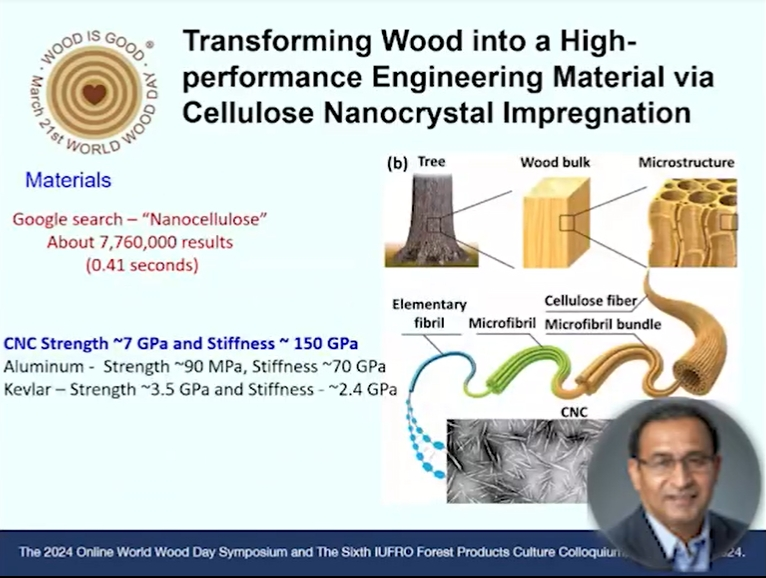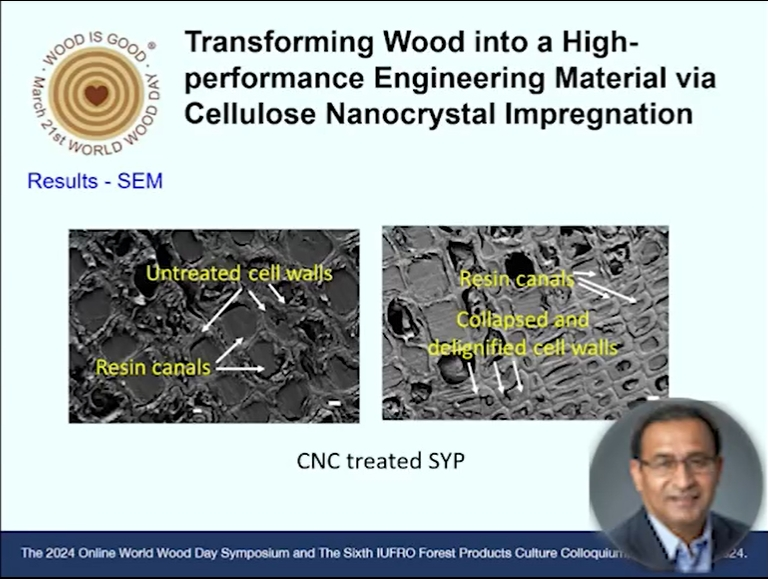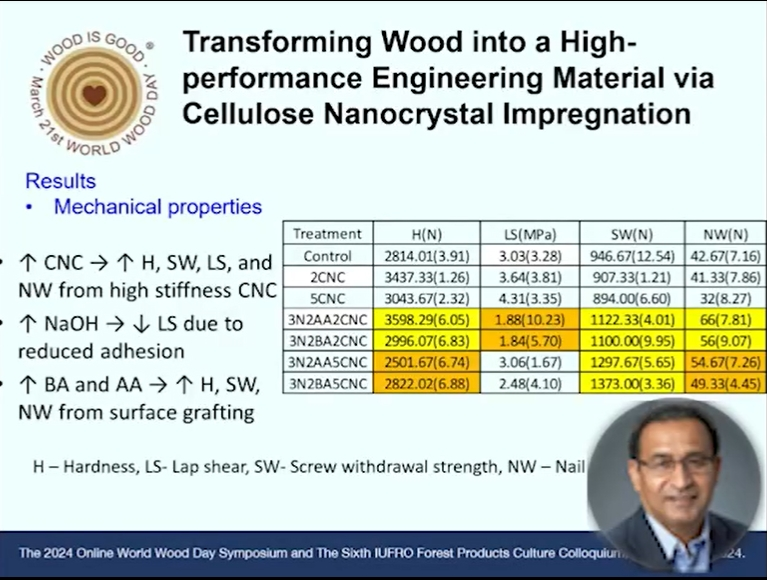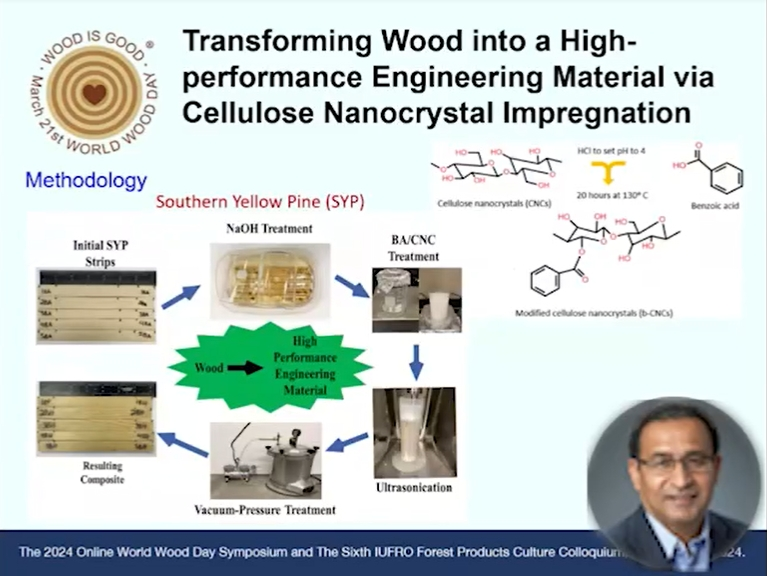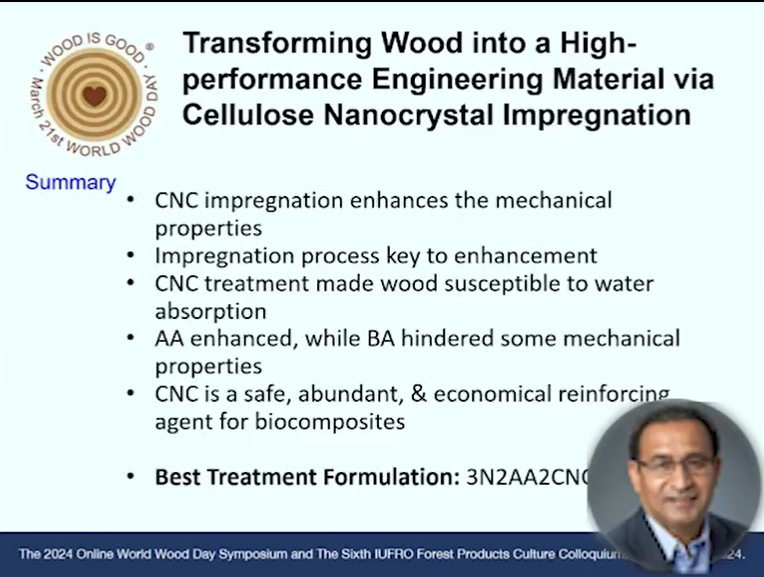会议名称:“2024世界木材日”研讨会暨第六届国际林联(IUFRO)林产品文化研究组讨论会
会议时间:2024年3月21-22日
报告嘉宾: Dilpreet Singh Bajwa 教授
嘉宾单位:美国蒙大拿州立大学
报告题目:Transforming Wood into a High-performance Engineering Material via Cellulose Nanocrystal Impregnation
报告摘要:
Wood has been an indispensable multipurpose material for ages. The increasing population has created a strong demand for wood as a construction material, resulting in shortages in the availability of high-strength wood. To meet the growing demand for high-strength wood products, softwood varieties that are weak for advanced engineering applications can be modified using cellulose nanocrystals (CNC) to enhance engineering properties. CNCs are abundantly available, lightweight, transparent, have high crystallinity, excellent mechanical properties, and are relatively low cost. In this research, a novel methodology was employed to enhance the mechanical properties of southern yellow pine wood through a combination of delignification and impregnation with surface functionalized-cellulose nanocrystals. The process included the delignification of SYP was performed using sodium hydroxide (NaOH). Subsequently, a CNC nanosuspension, functionalized with acetic acid (AA) and benzoic acid (BA), was mixed with the delignified wood. The wood samples were then ultrasonicated in the CNC nanosuspension, followed by vacuum pressure treatment.
The results from physical and mechanical tests on the treated wood demonstrated the ability of cellulose nanocrystals to generate high-performance materials from softwood. Atomic force and scanning electron microscopy confirmed the presence of CNC in the wood. The CNC treated samples had a smoother surface than the untreated samples, suggesting a more uniform microstructure and improved mechanical properties. The density of the treated SYP increased up to 30%. The mechanical test results (using ASTM D1037 and D2339 standards) and statistical data analysis revealed significant improvements in the mechanical properties of the treated wood. There was a remarkable increase of up to 110% in bending stiffness (modulus of elasticity, MOE) and up to 86% in bending strength (modulus of rupture, MOR). CNC treatment made wood susceptible to water absorption. Acetic acid treatment was more effective than benzoic acid. Overall, the study demonstrated that wood properties can be engineered by impregnating the CNC into the porous structure of softwood.
责任编辑:iwcs25H


 1,118
1,118

